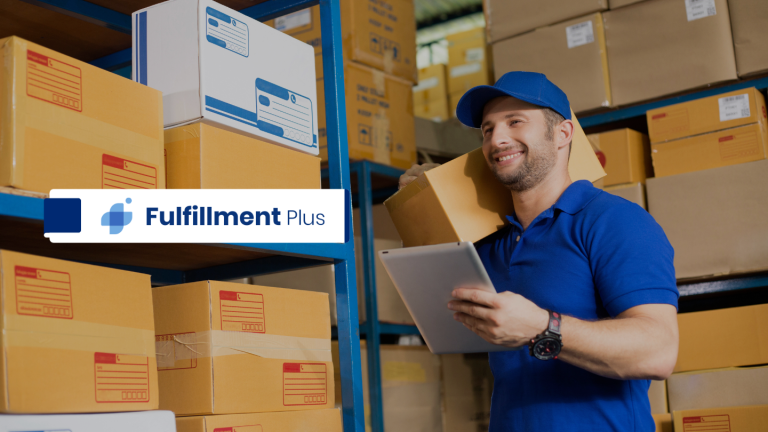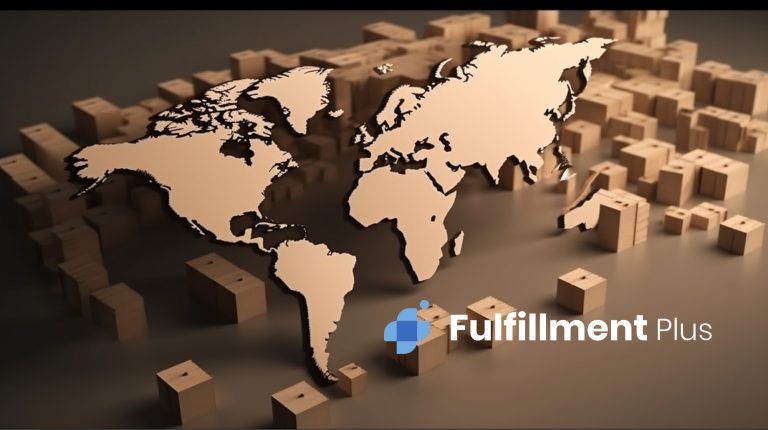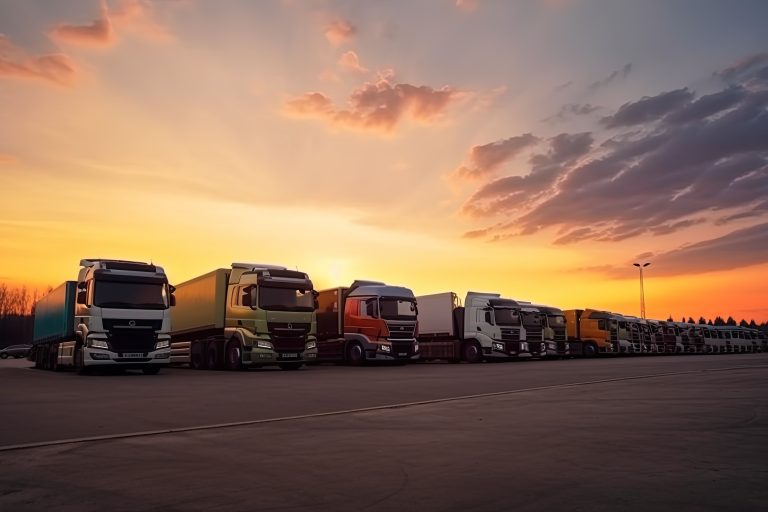Navigating the Last Mile: Fulfillment Companies as Architects of Efficient E-Commerce Delivery Routes
In the ever-expanding realm of e-commerce, the last mile of delivery represents a critical stage where customer satisfaction is often won or lost. The optimization of last-mile delivery routes is a complex puzzle that fulfillment companies adeptly solve. In this comprehensive blog, we will explore the multifaceted ways in which fulfillment companies contribute to the seamless and efficient navigation of last-mile delivery routes in the e-commerce landscape.
Understanding the Last Mile Challenge
The last mile of delivery is the final leg of the shipping journey, encompassing the distance from the distribution center to the customer’s doorstep. Despite its seemingly short distance, the last mile poses unique challenges such as variable delivery locations, traffic congestion, and the need for quick and reliable service.
Fulfillment Companies and Last-Mile Optimization
Strategic Location of Fulfillment Centers:
● Fulfillment companies strategically position their distribution centers to cover a wide geographic area efficiently. By having fulfillment centers in proximity to major population centers, they can reduce the overall distance that packages need to travel in the last mile.
Utilization of Advanced Routing Algorithms:
● Fulfillment companies leverage sophisticated routing algorithms powered by data analytics. These algorithms take into account various factors such as traffic patterns, delivery windows, and order density to optimize routes dynamically, ensuring timely and efficient deliveries.
Dynamic Route Planning:
● Real-time tracking and monitoring enable fulfillment companies to make dynamic adjustments to delivery routes. This agility is crucial in responding to unexpected events like road closures, traffic jams, or sudden changes in delivery priorities, ensuring flexibility in the face of unforeseen challenges.
Data-Driven Decision Making:
Predictive Analytics for Demand Forecasting:
● Fulfillment companies utilize predictive analytics to forecast demand patterns. By analyzing historical data and identifying trends, they can anticipate peak delivery times and adjust routes and staffing levels accordingly, preventing bottlenecks during periods of high demand.
Customer Data Integration:
● Integration of customer data allows fulfillment companies to customize delivery routes based on individual preferences and behaviors. This personalization not only enhances the customer experience but also enables more efficient deliveries by aligning with customer availability and preferences.
Optimizing Vehicle Fleet and Delivery Resources:
Efficient Load Balancing:
● Fulfillment companies optimize vehicle loading to ensure that each delivery vehicle carries an optimal number of packages. Efficient load balancing minimizes the number of vehicles needed for a given set of deliveries, reducing fuel consumption and emissions while maximizing delivery efficiency.
Implementing Sustainable Practices:
● Many fulfillment companies are increasingly adopting eco-friendly practices. This includes utilizing electric vehicles, optimizing routes to minimize fuel consumption, and exploring alternative delivery methods like drones or autonomous vehicles, contributing to a more sustainable last-mile ecosystem.
Enhanced Communication Channels:
Real-Time Communication with Drivers:
● Fulfillment companies establish robust communication channels with delivery drivers. Real time updates and two-way communication help drivers navigate routes effectively, respond to changes promptly, and provide customers with accurate delivery time estimates.
Customer Communication Platforms:
● Fulfillment companies implement customer communication platforms that offer real-time tracking and notifications. This transparency empowers customers with visibility into the status of their deliveries, reducing anxiety and enhancing overall satisfaction.
Balancing Speed and Cost-Effectiveness:
Same-Day and Next-Day Delivery Services:
● Fulfillment companies play a crucial role in offering expedited delivery options. Through optimized last-mile routes and efficient fulfillment processes, they facilitate same-day and next day delivery services, meeting the growing demand for quick order fulfillment in the e-commerce landscape.
Cost-Efficient Last-Mile Solutions:
● While speed is vital, fulfillment companies also focus on cost-effectiveness. By optimizing routes, minimizing delivery times, and consolidating shipments, they strike a balance between speed and cost efficiency, ensuring that businesses can provide competitive delivery options without compromising profitability.
Overcoming Last-Mile Challenges:
Addressing Urban Challenges:
● Fulfillment companies develop strategies to overcome challenges specific to urban environments, such as congestion, limited parking, and multiple delivery points. This may involve the use of smaller delivery vehicles, micro-fulfillment centers, or partnerships with local businesses for package holding.
Innovative Solutions for Rural Areas:
● In rural or remote areas, fulfillment companies explore innovative solutions like crowdshipping, where local individuals assist in last-mile delivery. Such approaches optimize routes in sparsely populated regions, ensuring efficient and cost-effective deliveries even in less densely populated areas.
Customer Satisfaction and Brand Loyalty:
On-Time and Reliable Deliveries:
● Fulfillment companies contribute significantly to on-time and reliable deliveries. By optimizing last-mile routes, they reduce the likelihood of delays, ensuring that customers receive their orders within the promised time frame. Reliability in delivery builds trust and enhances overall customer satisfaction.
Flexibility in Delivery Options:
● Offering diverse delivery options, such as time-slot choices or weekend deliveries, is made feasible by the last-mile optimization strategies employed by fulfillment companies. This flexibility caters to the varied preferences and schedules of customers, further enhancing their satisfaction and loyalty.
The Role of Technology in Last-Mile Optimization:
GPS and Route Mapping:
● GPS technology and route mapping applications play a pivotal role in last-mile optimization. Fulfillment companies leverage these technologies to provide accurate navigation for drivers, helping them navigate through intricate routes with precision.
Blockchain for Transparency:
● Some fulfillment companies are exploring blockchain technology to enhance transparency in the last-mile process. Blockchain ensures that all stakeholders, including customers, can access and verify information related to the delivery chain, fostering trust and accountability.
Case Studies: Real-World Success Stories
Amazon Prime’s Last-Mile Innovation:
● Amazon Prime, with its extensive fulfillment network and innovative approaches like Amazon Locker, showcases how a company can optimize last-mile delivery for millions of customers. The utilization of Amazon Hub Lockers allows customers to pick up packages at convenient locations, reducing the complexity of home deliveries.
Alibaba’s Smart Logistics Network:
● Alibaba’s smart logistics network is a testament to the power of technology in optimizing last mile delivery. Through the use of artificial intelligence, data analytics, and smart routing algorithms, Alibaba streamlines its delivery processes, ensuring efficiency and reliability for customers across diverse geographic locations.
Challenges and Future Trends in Last-Mile Optimization
Rising Consumer Expectations:
● Meeting increasingly high consumer expectations for fast, reliable, and convenient deliveries poses an ongoing challenge. Fulfillment companies must continue to innovate to keep pace wit evolving consumer demands and maintain a competitive edge in the market.
Environmental Sustainability:
● The push for environmentally sustainable practices in the last mile is a growing trend. Fulfillment companies are exploring eco-friendly delivery options, electric vehicles, and other green initiatives to minimize their carbon footprint and align with the rising awareness of environmental concerns.
Integration of Emerging Technologies:
● Integration of emerging technologies such as Artificial Intelligence (AI), Internet of Things (IoT), and autonomous vehicles is poised to reshape last-mile optimization. AI-driven predictive analytics can enhance route planning, while IoT devices enable real-time tracking and monitoring of delivery vehicles.
Collaboration and Partnerships:
● Collaborative efforts between fulfillment companies, retailers, and technology providers are expected to increase. Partnerships enable the sharing of resources, expertise, and technology, fostering a more interconnected and efficient last-mile ecosystem.
Autonomous Vehicles and Drones:
● The exploration of autonomous vehicles and drone technology for last-mile delivery is gaining momentum. Fulfillment companies are piloting programs and partnerships to leverage these technologies, potentially revolutionizing the speed and efficiency of last-mile logistics.
Micro-Fulfillment Centers:
● The establishment of micro-fulfillment centers in urban areas is becoming a popular strategy. These smaller, strategically located centers enable quicker access to inventory, reducing the distance traveled in the last mile and enhancing delivery speed.
E-commerce Delivery Revolution
In the intricate dance of e-commerce logistics, fulfillment companies emerge as orchestrators of efficiency, tackling the complexities of last-mile delivery routes with precision and innovation. From strategic distribution center placement and dynamic route planning to data-driven decision making and technology integration, fulfillment companies are pivotal in optimizing last- mile operations.
Real-world case studies exemplify the success stories of giants like Amazon and Alibaba, showcasing the impact of robust last-mile optimization on customer satisfaction and brand loyalty. Challenges such as rising consumer expectations and the imperative for environmental sustainability are driving continuous innovation in the field, pushing fulfillment companies to explore emerging technologies and collaborative partnerships.
As we peer into the future, the trajectory of last-mile optimization seems to be guided by the twin beacons of technology and sustainability. The seamless convergence of these elements holds the promise of not just meeting, but surpassing, customer expectations in the final stretch of the delivery journey. With their expertise and adaptability, are positioned as key players in shaping the next frontier of last-mile excellence in the dynamic landscape of e-commerce logistics.
Fulfillment Plus Orchestrates the E-Commerce Last Mile
Fulfillment Plus plays a pivotal role in optimizing e-commerce last-mile delivery routes. It addresess the complexities inherent in this critical phase of the supply chain. Firstly, Fulfillment Plus strategically positioned in New York achieves optimal geographic coverage. Proximity to major population centres allows for reduced overall distances traveled during the last mile. This strategic placement minimizes delivery times and enhances efficiency.
Advanced routing algorithms are another cornerstone of last-mile optimization. Fulfillment Plus
leverages data analytics to dynamically adjust routes based on factors like traffic patterns,
delivery windows, and order density. This real-time optimization ensures that delivery vehicles
follow the most efficient paths, saving time and resources.
Utilizing predictive analytics, Fulfillment Plus forecasts demand patterns, enabling proactive
adjustments to routes during peak periods. This anticipatory approach prevents bottlenecks and
ensures smooth operations during periods of high demand.
Fulfillment Plus also employs technology for real-time tracking and monitoring. This allows for dynamic adjustments to delivery routes, responding promptly to unexpected events such as road closures or traffic congestion. The ability to adapt routes in real-time enhances the overall agility of the last-mile delivery process.
Moreover, Fulfillment Plus contributes to efficient load balancing, optimizing the number of packages carried by each delivery vehicle. This not only reduces fuel consumption and emissions but also maximizes the efficiency of each trip. In conclusion, Fulfillment Plus’s role in last-mile optimization is multifaceted, encompassing strategic distribution center placement, advanced routing algorithms, predictive analytics, real- time tracking, and efficient load balancing. Through these mechanisms, Fulfillment Plus ensures that the last mile of e-commerce delivery is not only expedited but also cost-effective and environmentally sustainable.
Get in touch with us at 888-256-7790 or click here.







